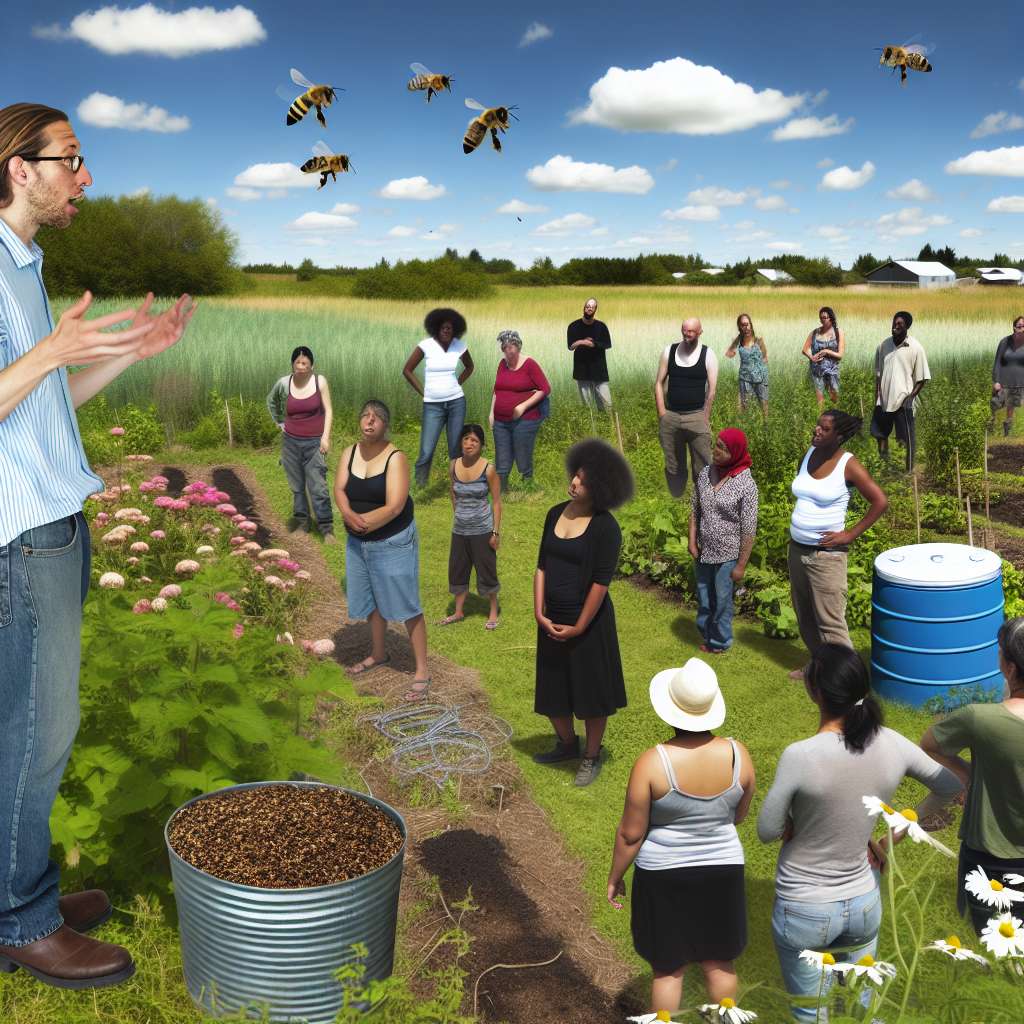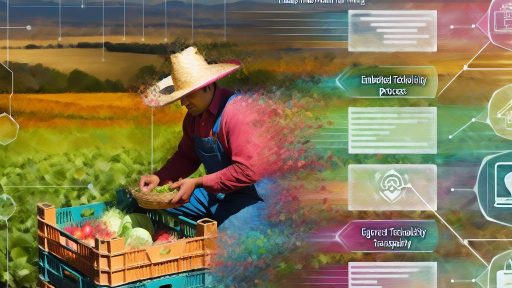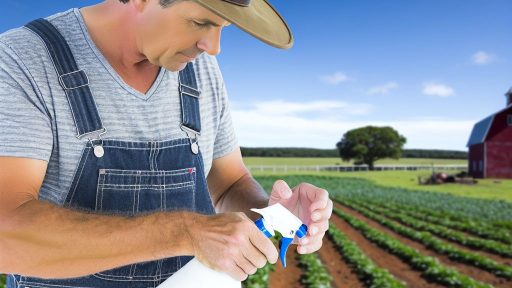Introduction to Permaculture: Principles and Practices
Defining Permaculture
Permaculture represents a holistic approach to land use and farming.
It integrates agriculture with ecology to create sustainable systems.
This design philosophy emphasizes working with nature.
By mimicking natural ecosystems, permaculture promotes biodiversity.
Key Principles of Permaculture
Permaculture is built on several foundational principles.
First, observe and interact with your environment.
This helps understand the specifics of the land.
Next, catch and store energy whenever possible.
This includes utilizing solar powers and rainwater harvesting.
Additionally, use renewable resources and services wisely.
This aims to sustain the environment for future generations.
Core Practices of Permaculture
Cultivating healthy soil is essential in permaculture.
Techniques like composting and cover cropping enhance fertility.
Moreover, implementing diverse planting strategies boosts resilience.
Integrating animals into the system can provide natural pest control.
Transform Your Agribusiness
Unlock your farm's potential with expert advice tailored to your needs. Get actionable steps that drive real results.
Get StartedFinally, designing for maximum efficiency minimizes waste.
Community Involvement in Permaculture Education
Education plays a vital role in promoting permaculture principles.
Workshops can create a platform for sharing knowledge.
Collaborative projects can enhance community engagement.
Furthermore, local farms can serve as demonstration sites.
This encourages hands-on learning and fosters relationships.
Benefits of Permaculture
Permaculture offers numerous benefits for communities and environments.
It increases local food security by enhancing food production.
Additionally, it encourages resourcefulness and self-sufficiency.
As a result, communities can become more resilient to economic changes.
Moreover, permaculture practices help combat climate change.
This approach reduces carbon footprints through sustainable practices.
The Role of Local Farms in Community Education
Creating a Learning Environment
Local farms serve as vital spaces for hands-on education.
They provide opportunities for community members to learn about agriculture.
Moreover, workshops on sustainable practices foster awareness.
Farmers often share their knowledge through direct engagement.
This interaction cultivates a sense of ownership among participants.
Encouraging Sustainable Practices
Education at local farms promotes sustainable agricultural practices.
Workshops on permaculture teach community members effective techniques.
Participants learn about resource management and conservation.
Additionally, these practices enhance food security.
As a result, they contribute to healthier ecosystems.
Building Community Connections
Local farms act as hubs for community connection.
Events bring together individuals from diverse backgrounds.
Showcase Your Farming Business
Publish your professional farming services profile on our blog for a one-time fee of $200 and reach a dedicated audience of farmers and agribusiness owners.
Publish Your ProfileThese gatherings foster networking and help build relationships.
Participants often collaborate on future projects.
This enhances community resilience and social cohesion.
Promoting Local Economies
Education on local farms supports local economies.
Workshops often focus on supporting local products and businesses.
By purchasing locally, community members invest in their economy.
This encourages a cycle of sustainability and growth.
Furthermore, it helps create jobs within the community.
Designing Permaculture Education Programs for Diverse Audiences
Identifying Audience Needs
Understanding your audience is crucial for effective permaculture education.
Conduct surveys to determine their interests and knowledge levels.
Focus groups can provide insights into community needs.
Additionally, engage with local organizations to gather more information.
Adapting Curriculum Content
Customize the curriculum based on audience feedback.
Include hands-on activities to enhance learning experiences.
Use relatable examples to make permaculture concepts accessible.
Incorporate local environmental issues to foster relevance.
Engaging Instructional Methods
Employ various teaching methods to cater to different learning styles.
Interactive workshops encourage active participation among learners.
Field trips to local farms enhance real-world understanding.
Utilize visual aids to support diverse learners effectively.
Building Community Partnerships
Collaborate with local schools and community centers for outreach.
Partner with local farmers to share practical insights.
Engage volunteers to expand your program’s reach effectively.
Across partnerships, maintain open communication to foster collaboration.
Evaluation and Feedback
Regularly assess program effectiveness through feedback forms.
Solicit participant input to improve future sessions.
Track engagement levels and learning outcomes for assessment.
Use this data to refine and adapt your permaculture programs.
Discover More: Building Direct Partnerships Between Farmers And Chefs For Fresh Produce
Case Studies: Successful Community Engagement through Permaculture
Local Farm Initiatives
Many local farms implement permaculture education to engage their communities.
For instance, Riverbend Farm offers workshops that teach sustainable practices.
These workshops include hands-on activities and practical demonstrations.
Participants learn about organic gardening, composting, and water conservation.
Additionally, this farm hosts community events, fostering connections among neighbors.
Partnerships with Schools
Another effective strategy involves partnering with local schools.
Sunny Fields Farm collaborates with elementary schools to introduce permaculture concepts.
Students participate in outdoor classrooms and hands-on gardening projects.
This initiative encourages children to appreciate nature and sustainable practices.
Moreover, it fosters a sense of responsibility towards the environment.
Workshops for Diverse Audiences
Permaculture education attracts various community members.
Showcase Your Farming Business
Publish your professional farming services profile on our blog for a one-time fee of $200 and reach a dedicated audience of farmers and agribusiness owners.
Publish Your ProfileClover Creek Farm organizes workshops tailored for different age groups and backgrounds.
They conduct sessions for aspiring gardeners, families, and even urban dwellers.
The farm emphasizes the value of community in creating sustainable solutions.
Consequently, participants form lasting friendships and networks within the community.
Success Stories and Impact
Many participants report positive changes in their lifestyles.
At Green Valley Farm, attendees have incorporated permaculture practices at home.
They focus on growing their own produce and using organic methods.
This shift leads to healthier eating habits and increased self-sufficiency.
Likewise, community gardens have sprouted throughout the neighborhood.
These gardens reflect collaboration and shared responsibility for local resources.
Feedback and Continuous Improvement
Continuous feedback from participants enhances educational programs.
Farms like Willow Run assess attendees’ experiences after each workshop.
Surveys reveal information about what participants found valuable.
The feedback informs future sessions, ensuring relevance to community needs.
As a result, these programs evolve to foster even greater engagement.
Delve into the Subject: Farm-to-Restaurant Programs for Sustainable Seafood Providers
Building Partnerships
Collaborating with Schools
Collaborating with local schools enhances permaculture education.
Students benefit from hands-on experiences at nearby farms.
Teachers appreciate resources that support their curriculum.
Workshops can be hosted to introduce permaculture concepts.
Field trips engage students in practical learning activities.
These connections foster a sense of community involvement.
Partnering with Local Organizations
Local organizations can provide additional support and resources.
Nonprofits focused on sustainability often seek partnerships.
Co-hosting events can amplify outreach efforts for both parties.
Collaboration can result in shared grants or funding opportunities.
Promoting events through various channels increases participation.
Examples of partnerships include community gardens and workshops.
Engaging the Community
Active community participation is crucial for successful initiatives.
Hosting open-house events invites community members to explore the farm.
Offering volunteer opportunities allows individuals to contribute directly.
Social media campaigns can highlight the benefits of permaculture.
Feedback from community members leads to better educational strategies.
Art and culture can be integrated into education for broader appeal.
Creating a Lasting Impact
Building partnerships strengthens the community’s commitment to sustainability.
Long-term educational programs benefit all participants.
Educated individuals can become advocates for sustainable practices.
Collective efforts lead to increased awareness about local food systems.
Ultimately, these partnerships inspire a more sustainable future.
See Related Content: Farm Fresh Delivery Services for Organic Food Lovers
Showcase Your Farming Business
Publish your professional farming services profile on our blog for a one-time fee of $200 and reach a dedicated audience of farmers and agribusiness owners.
Publish Your Profile
Hands-On Workshops: Techniques for Engaging Community Participation
Importance of Hands-On Learning
Hands-on workshops actively engage participants in the learning process.
This method promotes deeper understanding of permaculture concepts.
Furthermore, it allows participants to apply their knowledge immediately.
Creating Interactive Experiences
Interactive experiences foster collaboration among community members.
Organizing group activities encourages teamwork and communication.
Participants can learn from each other’s experiences and skills.
Example Activities to Implement
- Soil cultivation workshops to teach sustainable practices.
- Composting sessions for waste reduction and nutrient cycling.
- Garden planning exercises that involve community input and creativity.
Incorporating Local Resources
Utilizing local resources enhances the relevance of the workshops.
Engaging local experts can provide valuable insights and expertise.
Additionally, using local materials supports the community economy.
Networking with Local Farmers
- Invite local farmers to share their experiences and techniques.
- Establish partnerships with community gardens for resource sharing.
- Collaborate in hosting events that promote local agriculture.
Gathering Feedback for Improvement
Collecting feedback is essential for refining future workshops.
Participants should feel encouraged to share their thoughts.
Surveys or discussions after each workshop can provide valuable insights.
Incorporating suggestions shows attendees their opinions matter.
Using Feedback Effectively
- Analyze responses to identify popular topics and preferences.
- Adjust workshop content based on participant needs and levels.
- Track improvements over time to measure engagement and learning.
Gain More Insights: Enhancing Nutrient Cycles Through Integrated Livestock And Permaculture Practices
Measuring Impact
Purpose of Evaluation
Evaluating permaculture education initiatives aims to improve community engagement.
Understanding this impact helps farms assess their educational offerings.
Moreover, it showcases the benefits of permaculture to broader audiences.
Methods of Assessment
Data collection is integral to evaluating success.
Surveys can capture participant satisfaction and knowledge gains.
Additionally, interviews with participants provide qualitative insights.
Community engagement metrics can include attendance and retention rates.
Key Performance Indicators
Monitoring specific indicators helps measure effectiveness.
- Participant engagement levels reflect interest and commitment.
- Keen observation of behavioral changes indicates knowledge application.
- Feedback on course content shows areas for improvement.
Impact on Community
Successful programs strengthen local connections among participants.
Furthermore, they promote sustainable practices within the community.
As a result, permaculture education fosters a culture of ecological awareness.
Long-Term Outcomes
Long-term evaluation shows sustained engagement over time.
For instance, consistent application of permaculture principles leads to environmental benefits.
Moreover, ongoing community initiatives may arise from initial education efforts.
Real-Life Examples
Many farms successfully implement evaluation strategies.
For example, Green Acres Farm tracks participant improvements each season.
Another case is Maple Hill’s community workshops, which encourage feedback loops.
- Green Pastures Collective shared their results through local meetings.
- Harvest Roots initiates follow-up surveys to gauge long-term impacts.
Sustaining Community Interest
Creating a Vibrant Learning Environment
Establishing a welcoming space fosters positive experiences.
Encourage knowledge sharing among community members.
Utilize natural resources and local context in teaching.
Integrate practical hands-on activities regularly.
Form groups that engage in collaborative projects.
Implementing Regular Workshops and Events
Schedule frequent workshops to sustain interest.
Invite local experts to share their insights.
Organize seasonal events to connect with the community.
Include activities such as farm tours and cook-offs.
Showcase Your Farming Business
Publish your professional farming services profile on our blog for a one-time fee of $200 and reach a dedicated audience of farmers and agribusiness owners.
Publish Your ProfilePromote events through social media and newsletters.
Incorporating Feedback Mechanisms
Gather feedback from participants after each event.
Utilize surveys to gauge community interests and needs.
Adapt future programs based on participant suggestions.
Encourage open communication to strengthen relationships.
Building Partnerships with Local Organizations
Collaborate with schools to involve students in learning.
Partner with local businesses for resources and support.
Work with non-profits to expand outreach efforts.
Develop connections that benefit the entire community.
Promoting Success Stories
Share success stories to inspire community engagement.
Create a newsletter highlighting participant achievements.
Utilize social media to showcase positive impacts.
Develop a blog featuring stories of participants.
Encourage community members to share their experiences.
Additional Resources
Meet Kyle Hagerty from Sacramento,… – Humans Who Grow Food …
Meet Kyle Hagerty from Sacramento, California, United States “I’m a …




